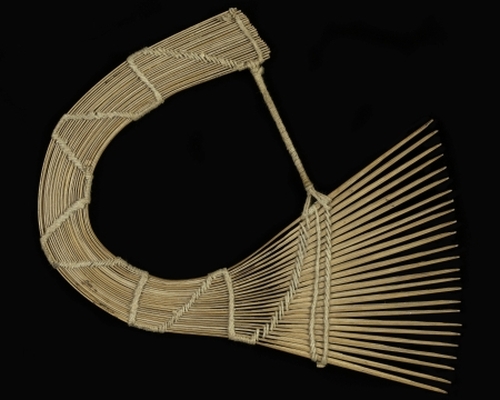
Origins of the Afro Comb: 6,000 years of culture, politics and identity
The Fitzwilliam Museum and the Museum of Archaeology & Anthropology, Cambridge
Curated by Sally-Ann Ashton, Senior Assistant Keeper, Antiquities, Fitzwilliam Museum and artist and writer Michael McMillan.
The 6,000-year history of the Afro Comb, its extraordinary impact on cultures worldwide, and community stories relating to hair today are being explored in a new exhibition at the Fitzwilliam Museum and the Museum of Archaeology & Anthropology in Cambridge.
The traditional African comb has been used in the creation, maintenance, and decoration of hairstyles for both men and women for over 6 millennia. In many African societies, ancient and modern, the hair comb symbolises status, group affiliation and religious beliefs. Today the Afro Comb has an iconic status, and the famous ‘Black Fist’ comb has taken an important place in twentieth century political history as an emblem of the Black Power Movement.
Origins of the Afro Comb follows the evolution of the comb from pre-dynastic Egypt to modern-day, tracing the similarities in form and the remarkable diversity of designs found across Africa and the African Diaspora. The exhibition is a part of a legacy project to record how the comb is used today, with visitors being encouraged to contribute their personal stories and hairstyles both to the exhibition and to archives for future generations.
Each of the hundreds of beautiful combs on display is a work of art, from pieces exquisitely carved in wood with tiny geometric designs, to works sculpted from ivory or inlayed with multi-coloured glass beads. The displays will include images and sculpture showing a wide variety of hairstyles illustrating how the combs have been used since antiquity.
A digital interaction gallery will show projections of personal stories about combs and African type hair, as well as the contribution personal styling has had to play in maintaining and expressing cultural identity.
At the Museum of Archaeology & Anthropology, the story is brought into the present with three connected contemporary art installations My Hair: Black Hair Culture, Style and Politics by artist and writer Michael McMillan. The installations show the development of the global black hair industry, the politicising and popularisation of Afros and Dreadlocks, and bring to life the ‘Cottage Salon’ in the Home, The Barber Shop and The Hairdressing Salon. Explaining black hair culture, styling and politics as we know it today, the installations are complemented by a film showing different hands styling hair, and a series of soundbites, which can be heard by sitting under one of the hairdryers.
Origins of the Afro Comb has been curated by Sally-Ann Ashton, Senior Assistant Keeper of Antiquities at the Fitzwilliam Museum: “This exhibition expresses the unity of archaeology and anthropology, where art meets personal human stories, observing patterns of change and continuity of this vital cultural tradition. Much of the work here has involved a very lively community of people today, working with a diverse committee contributing both advice and pieces for the displays, including artworks and personal combs. These personal items add depth to the story we are telling here, complementing the truly remarkable artworks we have on display from the Cambridge University Museums collections, from the British Museum, the Petrie Museum, the National Commission for Museums and Monuments in Nigeria and other individual contributors.”
Four major strands of Ashton’s own research are reflected in this exhibition: museum curatorship, Egyptology, anthropological fieldwork in Jamaica, and leadership of an innovative long-term prisons project across England, teaching black history – and at the same time studying the impact of imprisonment on hair.
Contributions from the widening public about their hair stories are being welcomed throughout the exhibition and beyond at the website.
Ashton commented: “Regardless of where you are and whether you visit the exhibition, we would love to hear from anybody who uses the combs today, who thinks about hair styles and what they might mean in general, or who might just be interested in cultural history at a global scale.
One of the most important displays in the exhibition is a case of combs with lost histories. They have no story because it was never recorded at the time; now we have no way of knowing. With enough contributions from the public we can create an important archive reflecting a unique part of our global culture today, and continue the story for future generations.”
This project is partially supported by the Heritage Lottery Fund.
The exhibition will run from 2 July to 3 November 2013
